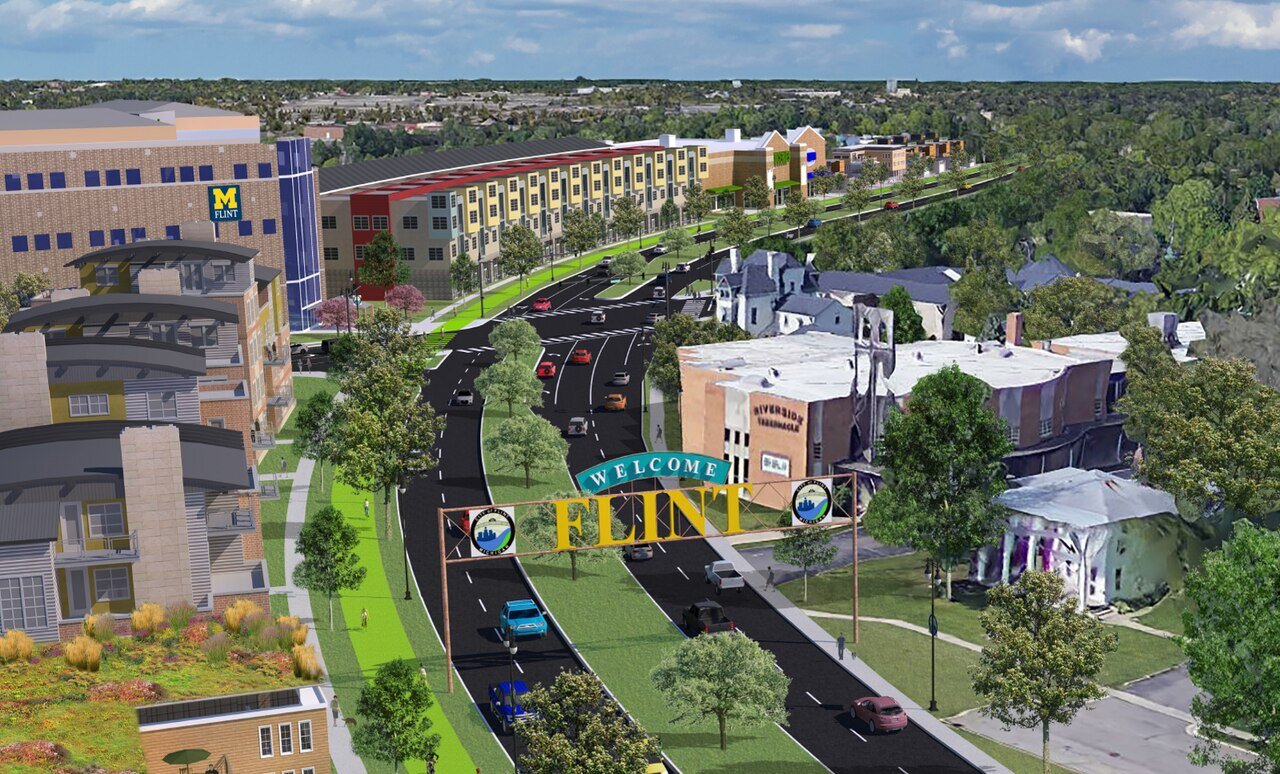I-475 is a relic of systemic racism, and if there’s a way to get rid of it, Flint should
I-475 has a past rooted in the displacement of Black Flint residents. If the city can get rid of a portion of it and restore its connection to neighborhoods near downtown, it should.

The following is a Flintside opinion piece
FLINT, Michigan — Throughout 2020, citizens around the country — including in Flint — have regularly rallied to protest police brutality against the Black community and systemic racism. During several of these protests, particularly in the southern United States, a focus has been on prominently displayed public monuments of historical figures who owned slaves, fought for slavery, or otherwise made major contributions to upholding oppressive systems against Black citizens. In several cases, when local municipalities failed to respond or move these monuments from public view, protestors took things into their own hands.
Flint has its own monument to systemic racism. It runs right through the heart of the city. When I-475 was constructed in the 1970s, it was done so under the guise of “getting rid of substandard housing” and came with a promise to bring economic development to the city. What it really did, as thoroughly reported in historian Andrew Highsmith’s book Demolition Means Progress, is displace Black residents and torpedo home ownership rates. Highsmith noted that among the Black residents of the St. John neighborhood that was cleared as part of the project, home ownership rates dropped from 50 percent to 15 percent. Highsmith also noted that “the I-475 and St. John renewal projects ultimately increased Black poverty and residential segregation.”
Construction of I-475 facilitated white flight — the expressway made it easier to live outside of the city and get quickly in and out of nearby factories. It promised “urban renewal,” but failed to deliver. Highsmith’s book includes this quote from a writing by Olive Beasley, a community activist who worked in Flint’s office of the Michigan Civil Rights Commission: “The whole history of urban renewal … has resulted in a history of Black removal from low income substandard housing in areas that are eventually redeveloped for higher income residents.”
A massive expressway is far more difficult to get rid of than pulling down a statue of a slavery-supporting general. But, according to a proposal that the city of Flint recently discussed at a community visioning session, it’s not impossible. The city is soliciting community input on a previously proposed idea to fill in a portion of the expressway (from approximately Court Street to Davison Road), level the landscape, and create a boulevard that would reconnect downtown Flint to adjacent neighborhoods. The idea came out of a study released in 2019 called the “Downtown Flint Gameplan.”
The city is seeking community input on whether residents would support using available state funds designated for re-paving a portion of the expressway toward a larger-scale project, should it be deemed feasible. There would also potentially be additional federal or state transportation funding available if the project ever became a reality, although city officials were quick to point out that they are only in an input-seeking phase and significantly more studies need to be done to determine what is actually possible.
Leveling the expressway would obviously eliminate 12 lanes of high-speed, hard-to-cross traffic, but it would also reclaim parcels of developable land and form new connection opportunities.
There’s also a very practical reason to consider redevelopment options for highways and interstates. As Business Insider reported in 2018, they’re expensive to maintain. Rochester, New York, for example, tore down approximately one mile of I-490 beginning in 2011 with much of the $21 million cost funded through federal transportation grants that wouldn’t have otherwise been available. In the years since the project began, the new parcels of land have created new housing and businesses in the community.
Longtime residents who have lived through Flint’s history have reason to be skeptical of any large-scale project that promises to bring dramatic change to the community — the original 475 project itself, in fact, promised to bring positive change and economic development to the city and instead helped hasten its decline. So far, though, city leadership seems to be approaching the proposal correctly — by being transparent in soliciting community input and not proceeding without support of residents and proper environmental and transportation impact studies. Any new development also has to be truly inclusive — if this project just further gentrifies the downtown Flint area, then it’s no better than the original project from the 1970s that it would theoretically replace.
The city government absolutely has the responsibility to be good stewards of city resources and the wishes of residents when pursuing this or any other massive development project. But that’s the practical side. If we’re serious about healing and growth from past injustices, we need to be ready and willing to do things like tear down massive expressways in service of that goal.







